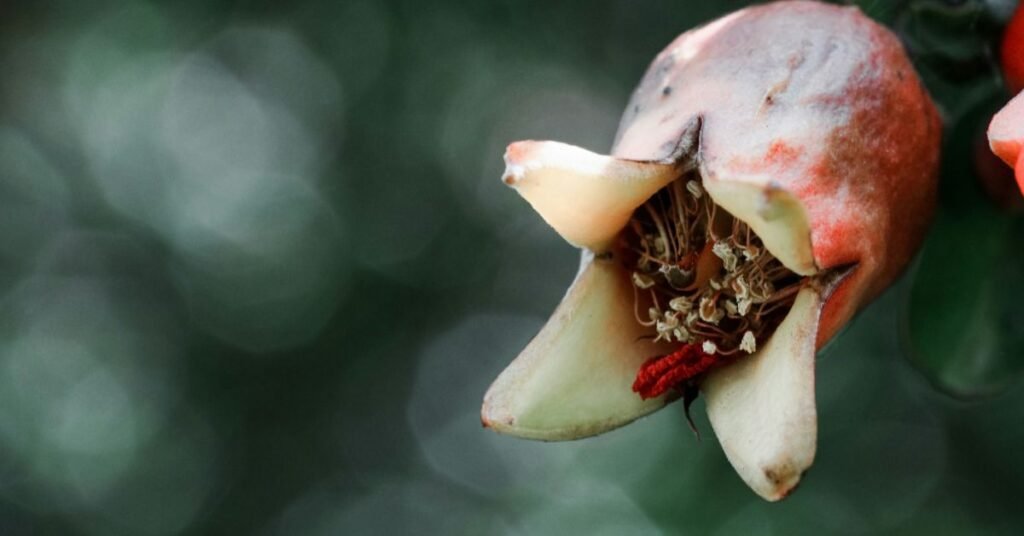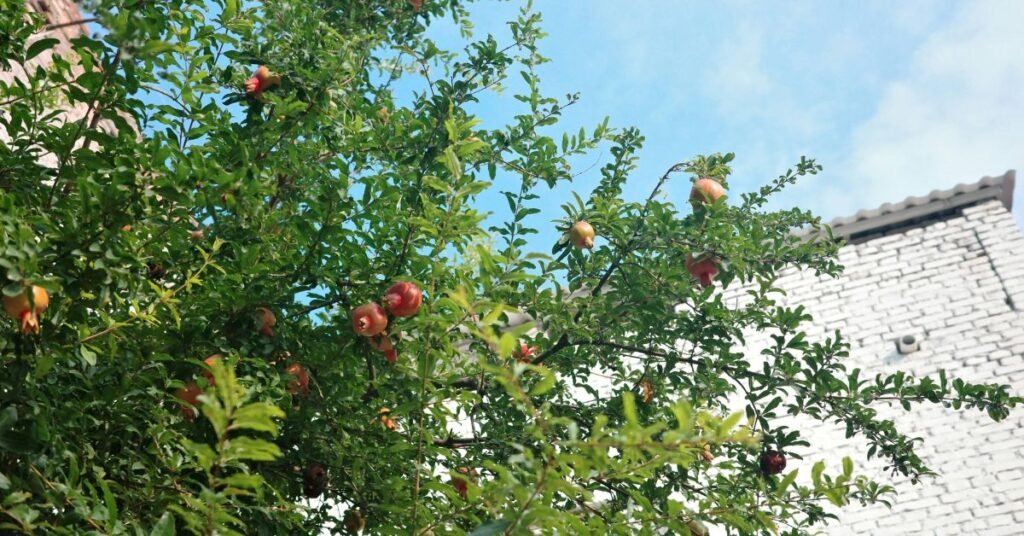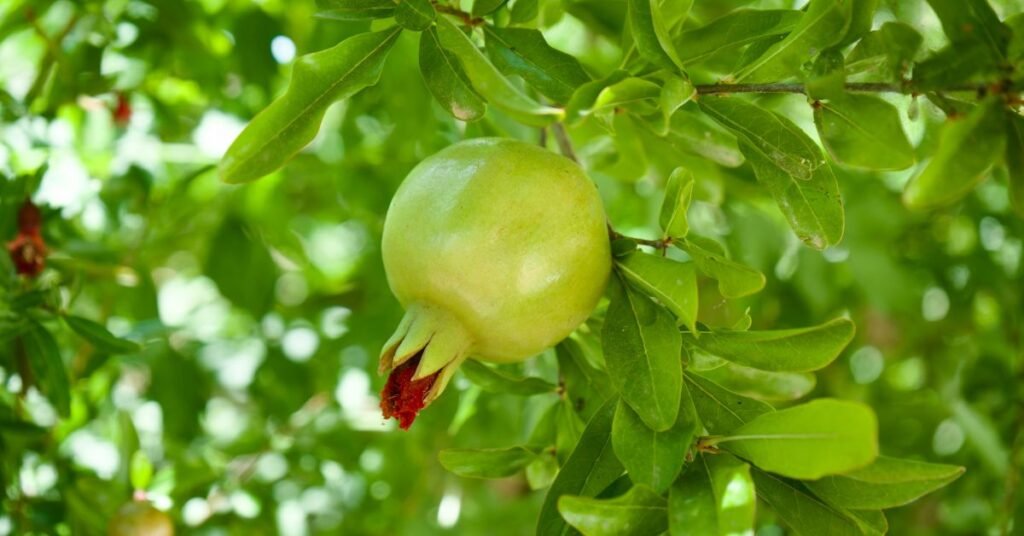The Pomegranate Plant (Punica granatum) is a beautiful fruit-bearing shrub known for its glossy leaves, vibrant flowers, and delicious ruby-red fruits. Native to the Mediterranean and parts of Asia, this plant is valued not only for its taste but also for its incredible health benefits. With proper care, the pomegranate can be grown easily in home gardens or pots, making it a favorite among gardeners.
Introduction
The Pomegranate Plant is one of the oldest known fruit plants, symbolizing fertility, health, and abundance. It’s a deciduous shrub or small tree that produces bright red flowers, followed by round fruits filled with juicy, seed-filled arils. The plant thrives in warm, dry climates and requires minimal care, making it perfect for both beginners and experienced gardeners.
Ideal Growing Conditions

1. Light Requirements
Pomegranates love full sunlight — at least 6 hours daily.
The more sunlight the plant receives, the better it flowers and fruits. Shade or low light can reduce fruit production.
2. Soil Type
The plant prefers well-draining loamy soil, but it can tolerate sandy or clay soils as long as they don’t stay waterlogged.
A pH level between 5.5 and 7.0 is ideal for best growth.
3. Watering
During the growing season, water regularly to keep the soil slightly moist.
However, avoid overwatering — too much moisture can cause root rot and poor fruit quality.
Once established, the plant becomes drought-tolerant.
4. Temperature
The Pomegranate Plant thrives in warm climates between 20°C to 35°C (68°F–95°F).
It can survive mild winters but must be protected from frost in colder regions.
How to Plant a Pomegranate Tree
- Choose a sunny location with well-drained soil.
- Dig a hole twice as wide as the root ball.
- Place the plant in the hole and backfill with a mix of garden soil and compost.
- Water thoroughly after planting.
- Mulch around the base to retain moisture and prevent weeds.
If growing in a container, select a large pot (at least 16–18 inches deep) with drainage holes.

Pruning and Maintenance
Regular pruning helps maintain shape and improves air circulation.
Tips:
- Prune in late winter before new growth starts.
- Remove dead or crossing branches.
- Thin out interior branches for sunlight penetration.
- Keep 4–5 strong stems for a balanced shape.
Pruning not only enhances the plant’s appearance but also encourages better flowering and fruiting.
Fertilization
Feed the Pomegranate Plant with a balanced fertilizer (10-10-10) during spring and again in summer.
You can also add organic compost or manure to improve soil fertility naturally.
Avoid over-fertilization — too much nitrogen encourages leaves instead of fruits.
Common Pests and Diseases
| Problem | Cause | Solution |
|---|---|---|
| Aphids or Whiteflies | Sap-sucking insects | Spray neem oil or insecticidal soap |
| Leaf Spot | Fungal infection | Remove affected leaves, use fungicide |
| Fruit Cracking | Irregular watering | Keep soil moisture consistent |
| Root Rot | Poor drainage | Use well-drained soil, avoid overwatering |
Harvesting
Pomegranates are ready for harvest 5–7 months after flowering.
The fruit’s skin should turn deep red and produce a metallic sound when tapped.
Cut the fruit using garden shears rather than pulling to avoid damage.
Health and Nutritional Benefits
The Pomegranate Plant is famous for producing fruits packed with antioxidants, vitamins, and minerals.
1. Rich in Antioxidants
Pomegranate juice contains punicalagins and anthocyanins, which fight free radicals and protect cells.
2. Heart Health
Regular consumption may reduce cholesterol and improve heart function.
3. Boosts Immunity
Loaded with vitamin C, it strengthens the immune system.
4. Aids Digestion
The seeds and juice help in improving gut health and reducing inflammation.
5. Skin and Hair Benefits
Pomegranate extracts are used in cosmetics for their anti-aging and skin-repairing properties.
Uses of the Pomegranate Plant
- Culinary: Juices, salads, desserts, and garnishes.
- Medicinal: Herbal remedies and traditional medicine.
- Decorative: Ornamental shrubs with bright flowers for landscaping.
- Cultural: Symbol of prosperity and love in many traditions.
Conclusion
The Pomegranate Plant is a perfect blend of beauty and health. Its stunning flowers, glossy leaves, and nutrient-rich fruits make it an ideal addition to any home garden. Whether grown in a backyard or a pot, this low-maintenance plant rewards you with delicious fruits and vibrant color all year long.
If you’re looking for a plant that’s both decorative and beneficial, the Pomegranate Plant is a truly timeless choice!

